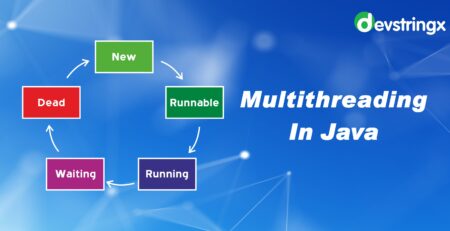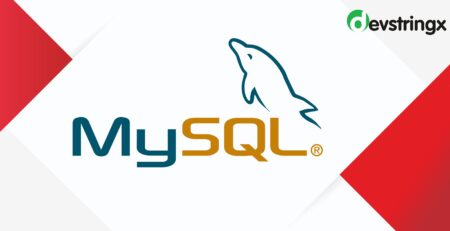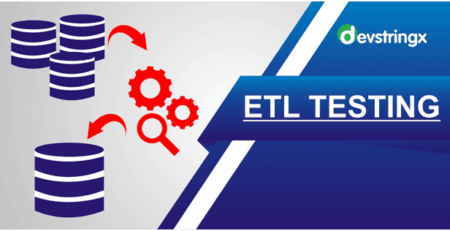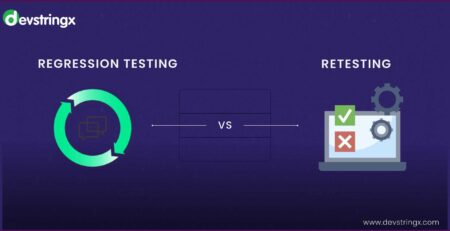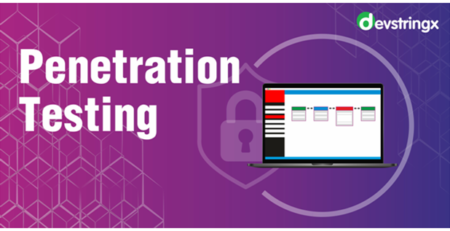Volume Testing in Software Testing With Example – Devstringx
What Is Volume Testing?
Volume testing, also known as flood testing or load testing, is a software testing technique used to evaluate the performance and stability of a system under varying load conditions. It involves subjecting the system to a significant volume of data or transactions to assess its behavior, response time, resource utilization, and scalability. The goal is to identify any performance bottlenecks or limitations and ensure that the system can handle the expected workload.
Tools for Volume Testing
When it comes to volume testing, selecting the right tools can make a significant difference in the quality of your results. Here are some popular tools for carrying out efficient volume testing:
-
Apache JMeter
It’s an open-source performance testing tool that is widely used for load and stress testing. With its user-friendly GUI, testers can easily simulate various scenarios on web applications.
-
LoadRunner
This tool is known for its capability to generate high-volume loads using virtual users quickly. It supports multiple protocols such as HTTP/HTTPS, FTP, SMTP, and more.
-
Gatling
Another open-source load-testing tool written in Scala language provides real-time metrics during test execution with minimal configuration needed.
-
BlazeMeter
A cloud-based load-testing platform designed to test API requests and web applications by simulating massive traffic volumes from different geographic locations worldwide.
-
NeoLoad
A powerful commercial performance testing tool that specializes in end-to-end application monitoring where you will get instant insights about how the system behaves after each iteration of tests.
Some Key Considerations In Volume Testing Include
During the volume testing time, we have to consider some key points. Below we mentioned 04 key points:-
-
Test Environment
Setting up a test environment that closely resembles the production environment in terms of hardware, network infrastructure, and software configurations is essential to obtain accurate results.
-
Test Data Generation
Generating realistic test data that reflects the expected production data volume is crucial to simulate real-world scenarios effectively.
-
Performance Monitoring
Utilizing performance monitoring tools to measure and analyze system performance metrics, such as response time, throughput, CPU usage, memory utilization, and network latency, helps identify performance bottlenecks and areas for optimization.
-
Scalability Testing
Conducting scalability testing in conjunction with volume testing can assess how the system performs when additional resources, such as servers or databases, are added to handle the increased load.
Benefits of Volume Testing
Volume testing has numerous advantages some of which we included below:-
-
Identifying Performance Bottlenecks
Volume testing helps uncover performance bottlenecks and resource limitations, allowing organizations to optimize their systems for better scalability and performance.
-
Ensuring Scalability
By subjecting the system to varying load conditions, volume testing ensures that it can handle the expected growth in data volume and user concurrency without compromising performance.
-
Enhancing User Experience
Through volume testing, organizations can identify and address performance issues that may impact the user experience, ensuring a smooth and responsive application or website.
-
Mitigating Risks
Volume testing mitigates the risk of system failures or downtime due to increased user load or data volume, helping organizations avoid potential financial losses or reputation damage.
-
Capacity Planning
Volume testing provides insights into the system’s capacity limits, enabling organizations to plan and allocate resources effectively to meet future demands.
Example
The CRM system is designed to handle customer data and sales leads, and track interactions with clients. The volume testing objective is to assess the system’s performance and stability under high data volume scenarios.
During volume testing, the system is subjected to a significant volume of customer records, sales leads, and associated activities. The test team will generate a large number of dummy customer profiles, each with various attributes such as name, address, contact details, and purchase history.
The test scenarios can include actions like creating new customer records, updating existing records, importing a large data set of customers from external sources, and performing searches or generating reports based on customer data.
The volume of data will be gradually increased to test the system’s performance and response time. For instance, the initial test phase may include a moderate volume of customer records, and then it will be gradually scaled up to simulate scenarios with millions of customer records.
The test team will monitor key performance indicators such as response time, database query execution time, CPU and memory utilization, and network bandwidth consumption. They will analyze the system’s behavior and identify any performance bottlenecks, such as slow response times, increased query execution times, or resource limitations under heavy data volume.
The volume testing results may reveal issues like increased database query times, degraded system performance, or system crashes when the data volume reaches certain thresholds. This information will help the development team optimize the system’s database queries, implement efficient indexing strategies, or scale up hardware resources to ensure smooth performance even with a large volume of data.
Additionally, volume testing can also assess how the system handles concurrent user activity along with high data volume. For example, the test scenarios can involve multiple users accessing customer data, creating new records, or running complex queries simultaneously to evaluate the system’s ability to handle concurrent requests.
By conducting volume testing in this CRM software example, the organization can gain insights into the system’s performance and scalability. It helps identify any limitations, optimize performance, and ensure that the CRM system can handle the expected data volume and user concurrency effectively.
Conclusion
In conclusion, volume testing is a crucial aspect of software testing that focuses on evaluating the performance and stability of a system under varying load conditions. By subjecting the system to a significant volume of data or transactions, organizations can identify performance bottlenecks, optimize resource utilization, and ensure scalability. Tools like Apache JMeter, LoadRunner, Gatling, BlazeMeter, and NeoLoad facilitate efficient volume testing.
This testing technique helps uncover performance issues, enhances the user experience, mitigates risks, supports capacity planning, and ensures that the system can handle expected growth. By conducting volume testing, organizations can optimize their systems, deliver a smooth and responsive user experience, and make informed decisions about resource allocation and system optimization.
Related Articles:-
Check out & leveraging the expertise of Noida’s top 10 Software Testing Companies that will help you to keep your product free!


